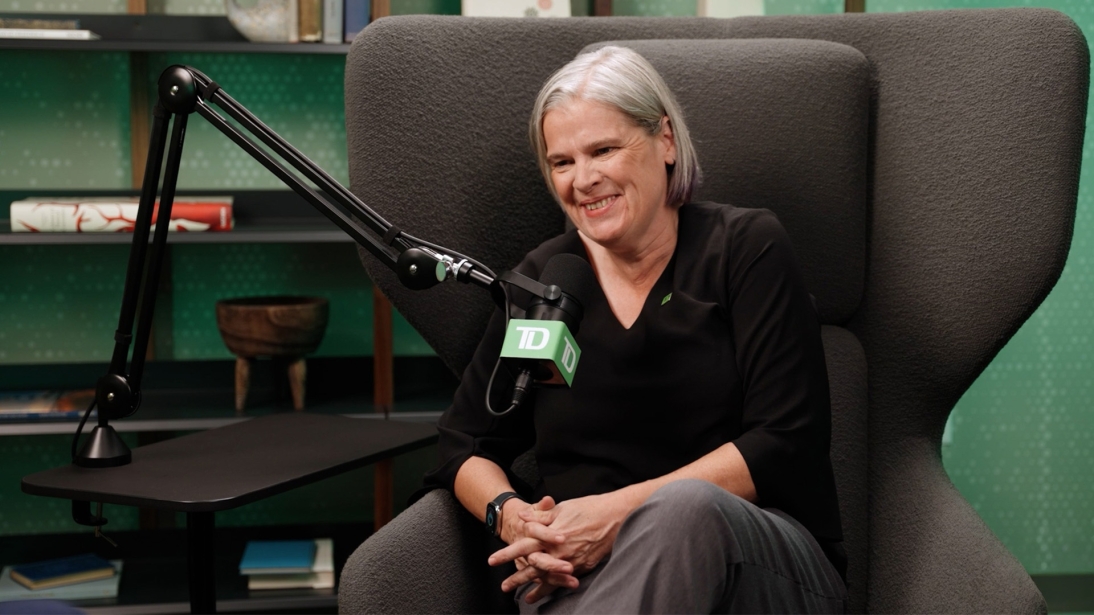An old boss of mine once told me to never sit next to him with a pad of paper.
Why? He didn’t want people to mistake me for his secretary, instead of an engineer on his technology team.
I was 10 years into my career, and I was already accustomed to being the only woman in the room.
I did my undergrad in computer science at Queen's University. It was the 1990s – grunge rock, grunge clothing, and giant computers. Out of my class of 84 students, three of us were women.
Here we are almost 30 years later, and we still haven't reached gender parity in science, technology, engineering and math (STEM) -related fields, and specifically in artificial intelligence.
According to the 2023 Global Gender Gap report, women make up only 30% of the AI workforce. That's a stat mirrored across STEM fields. Not only are there far fewer women than men working in AI, but multiple studies have shown that fewer women actually use AI, too, both at work and in their personal lives.
This imbalance, both among those working in and using AI, may have far-reaching implications for how AI tools are developed, trained and deployed. These problems aren't new and have been apparent across STEM fields for years.
I think it's incumbent on women currently working in STEM – and our allies – to use our influence to encourage more women to enter, and stay, in these challenges, yet often fulfilling careers.
AI tools can reflect the people that build and use them
The stats around women working in AI fields scare me. So too do the stats around the lack of women using AI tools. According to data shared in a recent Harvard Business School article, between November 2022 and May 2024, only 27% of all ChatGPT app downloads came from women (the number for desktop users was a little higher at 42%).
Why do numbers like this terrify me?
If you think about how these AI models are trained and how they learn, a lot of it is based on how we use, or prompt, them. If well under half of those prompts are coming from women, the bias is, I believe, getting compounded within the models. And that, to me, can be very alarming because it can impact the type of information AI tools serve to end-users.
On the flip side, bias can creep in if there's a lack of gender diversity among those building the tools. If you think about model development, a model is going to reflect the people who built it, which can introduce more bias into something like a chatbot, and potentially, further alienate women users.
At TD, with our Trustworthy AI approach, we aim to build models that reflect the diverse needs of our colleagues, clients and communities. My hope is that other organizations take similar approaches and think about diversity when developing computer models and AI tools.
But, even with guardrails in place to minimize bias, the aforementioned statistics still weigh on me. I think there's a way to to do a better job marketing STEM fields to girls and women.
Marketing STEM career to women and girls
Girls, I think, should be introduced to these fields early, and should have a better understanding of what a STEM, and more specifically, an IT career can be. There's this idea that it's isolated; that you're alone with a keyboard and monitor. But that's not always the case. It can be very collaborative.
I've never thought of it as a lonely career. It’s a career just like any other where you make friends and you work with people. You do not spend all your time alone in a garage or basement. I think that's a really important message to get out there.
At the same time, I think there's a way to build confidence among women, especially new grads and those who might be early in their careers. I've seen studies showing that women will self-select out of applying for a job if that they don’t meet all the required skills. Let me give you an example of this.
I once heard someone say they’ve never had a bad interview with a woman. First, I was like, "you go, girls!"
Then I really thought about what this might mean.
Maybe, they had only been talking to women who had been in a similar role or were exceptionally well qualified for the posted position. Maybe very few women took a chance and applied for a role they weren't already 100% qualified for.
Whenever women come to me for mentorship conversations, I tell them that if you see a job you think you want; go for it. You get 0% of the roles you don't apply for. You might not get that job, but that interview can expand your network and lead to another opportunity down the line. I've personally seen that happen many times.
I also encourage women in STEM at the Bank, and in other organizations, to develop relationships with mentors and sponsors and to build their personal brand at work. Like I said before, a career in IT doesn’t mean you spend all your time alone huddled over your laptop. You’re working with people and building tools for people. For me, that’s what makes it all so fulfilling.
Building AI confidence
For those who might not want to work in AI or even STEM, I still think we have a long way to go towards building technological confidence, especially around AI.
I think education, and early education, is critical. Artificial intelligence is already transforming so many facets of how we live and work. Will AI education be mandatory in schools? Based on how central it's becoming, AI education might just become an important tool towards boosting AI confidence.
I think those of us working in AI must continue to be mindful about building tools that appeal to all users, including women. That way we can hopefully start minimize bias, and get more women on board in the process.
It’s not the ‘90s anymore; our gender parity stats shouldn’t look like it either.

